When it comes to choosing the right holster, it can be pretty hard when you don’t know the pros and cons of what’s available. Stuck between a paddle holster and a belt holster? Well, you’ve come to the right place. Both paddle holsters and belt holsters have a lot to offer, as well as some drawbacks depending on your style.
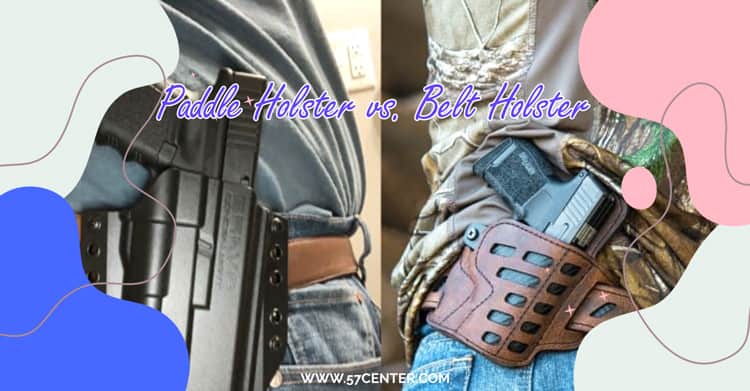
When it comes to choosing a holster that’s right for you, there’s a lot at stake here. You have to make sure you decide what’s most important for you whether that’s: concealment, comfort, functionality, and whether you want to open carry or concealed carry. Also, you’ll want to make considerations between an IWB holster and an OWB holster. Once you’ve done that, you’re ready to move into learning about what’s out there.
Contents
What is a Paddle Holster?
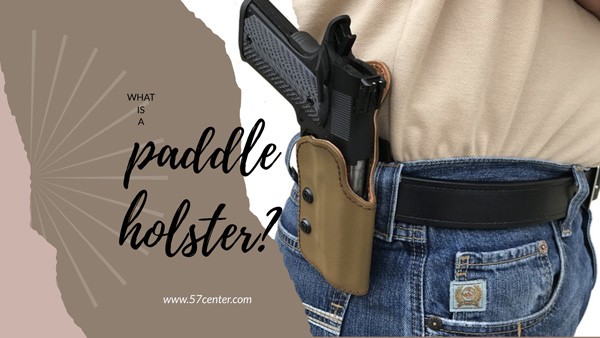
A paddle holster is a waistband holster that is composed of a wide, plastic backing that sits against your body and a
A paddle holster is best known for concealed carry applications. Modern paddle holsters will secure your firearm, regardless of the gun model, easily to your belt or waistband. It also allows for simple removal since the means of contact is just a simple paddle attachment.
A paddle holster will stabilize your entire holster; a lot of modern paddle holsters come equipped with teeth or gripping devices that line the edges of the paddle attachment and provide security and grip retention to where it attaches to your belt.
Since the paddle attachment is smooth and will hold your firearm against you closely, it’s often more comfortable for when you are carrying it. Also, unlike a belt slide holster, you can easily move a paddle holster to wherever you need it on your belt. This way, you’ll always be able to adjust to retain your comfort and efficiency at the same time.
Why Should I Choose a Paddle Holster?
There’s a few advantages that a paddle holster can provide depending on what you need it for. Most of these positives will depend on your carry type, gun model, intended use, and just personal preferences. Let’s take a look at some of the advantages that you can have when carrying a paddle holster:
- It can be moved to anywhere on the waistband you need to optimize comfort and drawing efficiency.
- It’s very easy to move it.
- It’s very easy to remove it from your waistband as there is no actual clips.
- The paddle attachment is flat against your body which allows for a smoother firearm draw.
- A lot of modern paddle holsters come with a cant adjustment which allows you to adjust the grip angle of the firearm.
Pros and Cons
Like any firearm holster, paddle holsters come with their own set of advantages and disadvantages. Let’s take a closer look at some of the pros and cons associated with paddle holsters:
Pros:
- Convenient Attachment: Paddle holsters can be easily attached and detached without the need for belt loops or clips, making them ideal for quick transitions or situations where a belt may not be worn.
- Comfortable Fit: The paddle design distributes the weight of the firearm over a larger surface area, increasing comfort during extended wear.
- Adjustable Retention: Paddle holsters often feature adjustable retention screws or mechanisms, allowing the wearer to customize the level of retention based on their preference.
- Holster Cant Adjustability: Some paddle holsters offer the ability to adjust the angle or cant of the holster, enabling a personalized draw position.
Cons:
- Bulkiness: Paddle holsters can be bulkier compared to other types of holsters, which may make them less suitable for concealed carry purposes.
- Limited Concealability: Due to their design, paddle holsters may be more challenging to conceal under certain clothing styles, especially when compared to inside-the-waistband or appendix carry holsters.
- Less Secure Without Belt: While paddle holsters provide a secure fit when attached to the waistband, they may not be as secure without the added support of a belt. Vigorous physical activity or sudden movements can potentially dislodge the holster.
- Limited Compatibility: Paddle holsters may have limited compatibility with certain firearm models or accessories, so it’s crucial to ensure compatibility before purchasing.
Design Features
Paddle holsters incorporate several design features that enhance their functionality and performance. Here are some common design features found in paddle holsters:
- Paddle Attachment: The paddle-shaped attachment is the defining feature of paddle holsters. It is usually made of durable materials like polymer or Kydex, providing strength and stability.
- Trigger Guard Coverage: Paddle holsters offer complete coverage of the trigger guard, ensuring enhanced safety by preventing accidental trigger manipulation.
- Adjustable Retention: Many paddle holsters feature adjustable retention screws or mechanisms, allowing users to fine-tune the level of retention to their preference.
- Sweat Guard: Some paddle holsters come with a built-in sweat guard or body shield, which serves to protect the wearer’s firearm from sweat, moisture, and body oils.
- Holster Cant Adjustment: Certain paddle holsters offer the ability to adjust the holster’s cant or angle, enabling a more ergonomic and natural draw motion for the wearer.
Common Use Cases
Paddle holsters find utility in various scenarios and applications. Here are some common use cases where paddle holsters excel:
- Range Practice: Paddle holsters are frequently used by shooting enthusiasts during range practice sessions, providing a secure and convenient option for drawing and reholstering their firearms.
- Open Carry: In jurisdictions where open carry is legal, paddle holsters offer a practical and accessible method of carrying a firearm openly on the hip or waistband.
- Competition Shooting: Many competitive shooters prefer paddle holsters for their ease of use and quick draw capabilities during shooting competitions.
- Training and Instruction: Paddle holsters are often employed by firearms instructors during training sessions to facilitate safe and efficient weapon handling.
Comparison with Belt Holster
While paddle holsters offer distinct advantages, they differ from belt holsters in various aspects. Let’s compare paddle holsters with belt holsters to better understand their differences:
- Attachment Method: Paddle holsters utilize a paddle-shaped attachment that slides over the waistband, while belt holsters rely on belt loops or clips for attachment.
- Convenience: Paddle holsters provide quick and easy attachment and detachment, making them more convenient for situations where a belt may not be worn. Belt holsters require a belt for proper attachment.
- Comfort: Paddle holsters, with their paddle-shaped attachment, distribute the weight of the firearm over a larger area, offering increased comfort during extended wear. Belt holsters rely on the tightness of the belt for support.
- Concealability: Belt holsters generally offer better concealability compared to paddle holsters, as they sit closer to the body and can be easily hidden under clothing.
- Retention: Both paddle holsters and belt holsters can provide secure retention, but paddle holsters often offer adjustable retention mechanisms for personalized preferences.
- Compatibility: Belt holsters are generally more compatible with a wider range of firearm models and accessories compared to paddle holsters.
What is a Belt Holster?
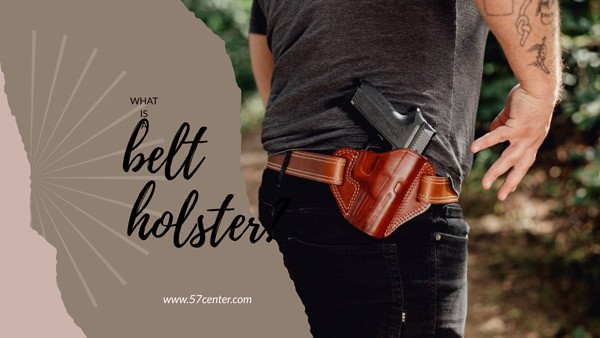
A belt holster is another type of firearm holster that can be used for both open carry or concealed carry. It’s also known to be used as an OWB holster. A belt holster is designed with holes in the back where you thread your belt through, which essentially makes it a belt loop attachment. This way, you can slide the holster onto your belt before you put it on, providing extreme security and stability.
The belt holster is the most secure type of OWB holster out there. In order to remove the holster from your person, you have to take off your belt and physically slide it off. It’s physically impossible to remove the entire holster unless the belt is taken off first.
It’s for this reason that this OWB holster is also the most popular choice when it comes to open carry. Because it is impossible for an outsider to snatch it, it’s an easy choice for open carry. It’s also tightly fitted to your belt, which means it’s tightly fitted against your body. This holster is easier to conceal under a shirt or jacket than the paddle holster is.
Why Should I Choose a Belt Holster?
A belt holster, just like the paddle holster, provides many great benefits of its own. A lot of these features depend heavily on your intended use, so just remember your specific needs and preferences; not every gun owner is going to need a belt holster. So, let’s take a look at the possible benefits of using a belt holster:
- It fits snugly to the body and is easier to conceal.
- It’s extremely stable and secure.
- It’s impossible to remove it without removing the belt first.
Pros and Cons
Belt holsters offer several advantages and disadvantages worth considering:
Pros:
- Accessibility: Belt holsters allow quick and easy access to the firearm, enabling a swift draw when necessary.
- Comfortable Carry: When properly fitted and adjusted, belt holsters distribute the weight of the firearm evenly, ensuring comfortable carry throughout the day.
- Concealability: Many belt holsters offer options for concealed carry, allowing users to discreetly carry their firearm without drawing unnecessary attention.
- Retention: Belt holsters typically provide excellent firearm retention, ensuring that the firearm remains securely in place even during physical activity.
Cons:
- Limited Retention Methods: Depending on the specific model, some belt holsters may lack adjustable retention mechanisms, leading to potential issues with firearm fit and security.
- Printing: The outline of the firearm may be visible through clothing when carrying a belt holster concealed.
- Accessibility Limitations: Depending on the user’s clothing style or physical limitations, accessing a belt holster may prove challenging in certain scenarios.
Design Features
Belt holsters come in various designs and incorporate specific features to enhance functionality and user experience. Some common design features include:
- Material: Belt holsters are often made from durable materials such as leather, Kydex, or nylon, providing longevity and reliable performance.
- Belt Attachment: Holsters utilize belt loops, clips, or paddle attachments to secure the holster to the user’s belt, ensuring stability and ease of use.
- Adjustable Retention: Many belt holsters offer adjustable retention mechanisms, allowing users to customize the level of retention for their specific firearm.
- Cant Adjustment: Some belt holsters feature cant adjustment options, enabling users to adjust the angle at which the firearm is carried for optimal comfort and accessibility.
- Thumb Break or Retention Strap: Certain belt holsters incorporate thumb breaks or retention straps for an additional layer of security, ensuring the firearm remains in place until intentionally drawn.
Common Use Cases
Belt holsters find application in various scenarios, catering to the needs of different individuals. Some common use cases for belt holsters include:
- Concealed Carry: Many individuals rely on belt holsters for concealed carry purposes, allowing them to maintain a low profile while carrying their firearm.
- Open Carry: Belt holsters are also popular among open carry enthusiasts who prefer to openly display their firearms while adhering to local laws and regulations.
- Range Training: When participating in firearms training or visiting shooting ranges, individuals often utilize belt holsters to safely and conveniently carry their firearms.
Comparison with Paddle Holster
While both belt holsters and paddle holsters serve the purpose of carrying firearms, they differ in their design and functionality. Here are a few key distinctions between the two:
- Attachment Method: Belt holsters secure to the user’s belt, while paddle holsters attach to the waistband of the user’s pants or skirt.
- Accessibility: Belt holsters generally offer faster access to the firearm compared to paddle holsters, as they remain in a fixed position on the belt.
- Concealability: Paddle holsters tend to provide better concealment options, as they minimize printing and can be easily removed without unbuckling the belt.
- Comfort: Belt holsters, when properly fitted, tend to distribute the weight of the firearm more evenly, potentially offering enhanced comfort during extended wear.
Paddle Holster vs Belt Holster
| Feature | Paddle Holster | Belt Holster |
|---|---|---|
| Attachment Method | Attaches to the waistband of pants or skirt | Secures to the user’s belt |
| Accessibility | May require removing the holster from the waistband for access | Offers quick and easy access to the firearm |
| Concealability | Minimizes printing and can be easily removed without unbuckling | May have potential printing but offers concealed carry options |
| Comfort | May distribute weight unevenly and cause discomfort | Provides even weight distribution for comfortable all-day carry |
| Versatility | Limited to specific waistband attachment | Accommodates different belt widths and adjustable retention |
| Draw Speed | Slower draw due to additional steps in accessing the firearm | Faster draw as the holster remains in a fixed position |
| Use Cases | Suitable for concealed carry and offers good concealment | Suitable for concealed carry, open carry, and range training |
When it comes to choosing waistband holsters, a majority of your choice will rely on your choice of carry position, your gun model, and where you intend to carry. However, we all should remember the main purpose of a gun holster: firearm safety. When you use a holster to carry a firearm, you want to make sure that you are keeping yourself, others around you, and your firearm safe and secure. There’s a lot of things to consider about how you plan to carry and where you intend to carry. Things like firearm accessories and your normal daily routine are things that should also be considered.
Gun Model & Accessories
This is an especially important one. When choosing a holster, when it’s a leather holster or a plastic holster, you want to know the specifics of your firearm in order to get the perfect holster fit. Make sure you are getting a holster that is made to fit your weapon, that way you can ensure proper retention and security of your firearm. Things like a trigger guard or a retention device are some of the things that can be affected by your gun model; it’s very important you get the right size and shape holster model.
If you want to also carry something else, like a magazine pouch, you’ll have to consider the size and placement of the holster as well. Firearm accessories like a scope or sight will also affect the holster choice you can make.
Accessibility
This is another important one. I mean, what’s the point of carrying a firearm if you can’t even reach it properly?
This is where your daily routine will come in. Just taking a trip to the grocery store is much different than going on a long hike. These kinds of tasks can vary throughout your day, so you want to make sure that the holster model you choose is something that won’t restrict your drawing or ability to reach the grip, but will also make sure the firearm is safe and secure no matter what you do during your day.
Not only that, but you’ll want to consider if other people will have reach to your weapon. If you’re going to be in a lot of crowded places, you’ll probably want something that has more of an active retention to prevent other people from snatching your gun right out of the holster (or even just the entire holster!).
Retention
Retention, I would say, is one of the most important features that a holster can have. There’s a few different types of retention that are commonly found on any given holster model, all of which will provide different levels of safety and security. You can have active retention, passive retention, and even adjustable retention.
Passive Retention
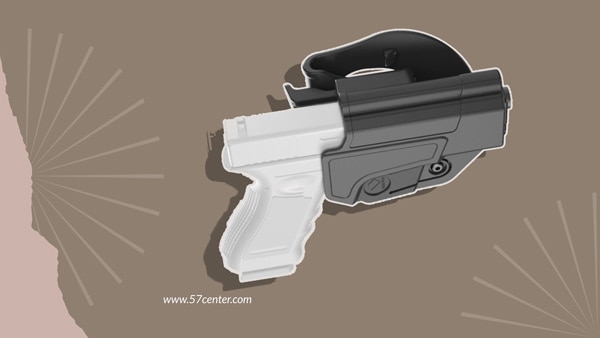
Passive retention is when your holster is modeled to fit the exact gun model that you own. This provides pressure and friction on your weapon, which essentially holds it in place; hence the “passive” retention. There’s no active device like a strap or clip that is holding your weapon in, just purely friction.
This type of retention is typically only suited for concealed carry and iwb holsters. If your firearm is exposed on your waistband, than you’d definitely want some kind of active retention. Passive retention will not prevent an ill-intended soul from snatching your firearm.
Active Retention
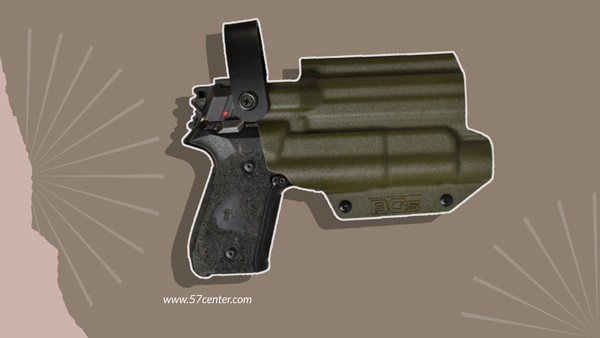
This is the most secure type of retention. Active retention is the opposite of passive. Active retention is when the holster model possesses some sort of device, like a strap or an adjustable retention device, that will physically hold your firearm into the holster.
Most commonly, active retention is a strap, hood, retention screw, or a lever. This means that something will have to be physically moved in order to draw your weapon. Active retention is what you will need if you intend to open carry. This will keep your gun safe from others who try to steal it off you.
Recommendations
Now that you know what to look for and what each style of holster model has to offer, let’s leave off with some excellent brand and product recommendations to get your search started:
- Alien Gear Holster
- Galco Speed Paddle
- Fobus Paddle
FAQs
A. How should I choose the right belt holster size?
To choose the right belt holster size, it is crucial to consider the specific firearm model you intend to carry. Look for holsters that are specifically designed for your firearm make and model to ensure a proper fit. Additionally, consider the compatibility with your belt width and the adjustability options offered by the holster.
B. Can a belt holster accommodate different firearm models?
Some belt holsters are designed to accommodate multiple firearm models, offering versatility and convenience. However, it is important to check the compatibility of the holster with your specific firearm model before making a purchase. Always ensure a secure and snug fit to prevent any accidental movement or loss of retention.
C. Is it safe to carry a loaded firearm in a belt holster?
Carrying a loaded firearm in a belt holster is generally safe, provided that you follow proper safety procedures and guidelines. It is crucial to ensure the holster offers adequate retention and trigger guard protection to prevent accidental discharges. Additionally, always practice safe firearm handling and follow local laws and regulations regarding carrying loaded firearms.
D. Can I conceal a belt holster under my clothing?
Yes, many belt holsters are designed to allow concealed carry. These holsters are often designed with features such as adjustable cant and minimal printing to facilitate discreet carrying under clothing. However, it is essential to select clothing styles that provide adequate coverage and prevent the holster and firearm from being visible.
E. Are belt holsters suitable for both left-handed and right-handed individuals?
Yes, belt holsters are available in both left-handed and right-handed configurations
References
https://www.survivaljunkies.com/paddle-vs-belt-holster/
https://wethepeopleholsters.com/blogs/news/what-is-a-paddle-holster

Brian Belko is a freelance writer and blogger. His primary areas of focus include the outdoors and shooting sports. In addition to his freelance work, Brian also writes for Wide Open Spaces and is on the Pro Staff at Military Hunting and Fishing. When he isn’t busy writing, Brian enjoys fishing farm ponds for bass and hitting the spring woods during turkey season.
